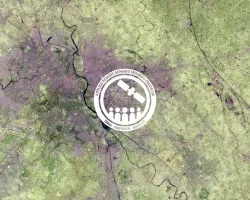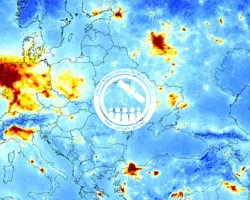Description
June 16, 23, & 30, 2021
Google Earth Engine (GEE) for remote sensing applications is quickly becoming one of the most utilized tools in the scientific and decision-making community. GEE provides unparalleled access to large-scale data analysis through cloud computing technology. The online interface allows users to access and analyze stores of NASA Earth data without the need for any locally stored data or software. This training will cover the GEE Code Editor, hands-on exercises on change detection, time series analysis, land cover classification, and accuracy assessment of optical imagery. These processes are an integral part of optical imagery analysis for many applications, including monitoring forest disturbance, wildfire mapping, identifying land cover degradation, mapping ecosystem connectivity, and identification of land surface changes due to urban growth. Attendees will be provided scripts for conducting these analyses in GEE and instructed on how to execute these scripts to produce maps and visualizations of environmental data.
- Fundamentals of Remote Sensing
- Participants should create a GEE account prior to the start of the training by visiting the new Earth Engine account sign up page.
By the end of this training, attendees will be able to:
- Navigate the GEE interface to explore remote sensing datasets relevant to land monitoring
- Execute JavaScript commands to retrieve satellite data and process imagery for analysis
- Complete a supervised land classification along with an accuracy assessment in GEE
- Apply algorithms to derive a time series of environmental parameters and calculate differences between years to detect landscape changes
- Illustrate the capabilities of cloud-based raster computing for land management applications
Local, regional, state, federal, and non-governmental organizations involved in land management, conservation, biodiversity, and forest monitoring.
- Three 2-hour sessions
- Those who attend all three live training sessions and complete the homework will be awarded a certificate of completion.
- Recordings of each training session will be posted within 48 hours after the session.
- Presentation slides, homework, and other materials will appear underneath each session description as they are made available.
- Introduction to Google Earth Engine Functionalities and Available Data Types
- Basics Functions in GEE JavaScript API Activity
- Python API Demonstration
- Q&A
Materials:
- Land Cover Classification and Accuracy Assessment Overview
- Landsat Data Retrieval and Imagery Preparation
- Supervised Land Cover Classification
- Accuracy Assessment of Land Classifications
- Q&A
Materials:
- Overview of Time Series and Change Detection
- Environmental Parameter Calculations
- Time Series Display of Environmental Data
- Change Detection Calculation and Mapping
- Q&A
Materials:



